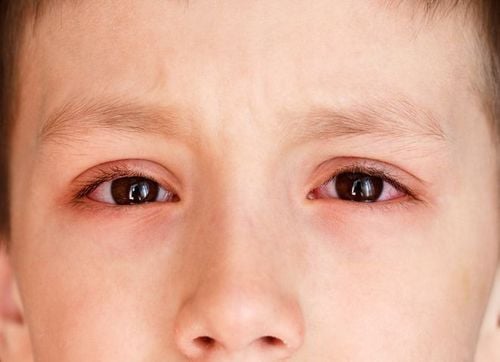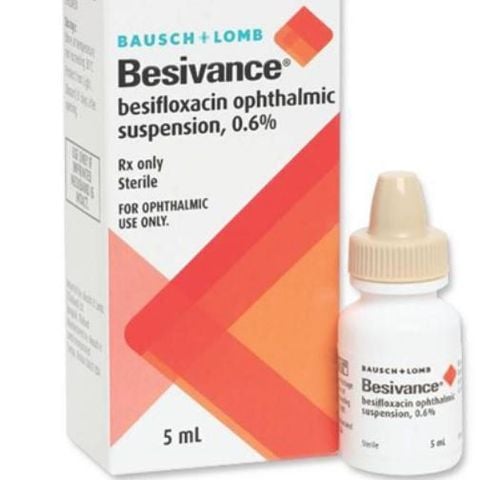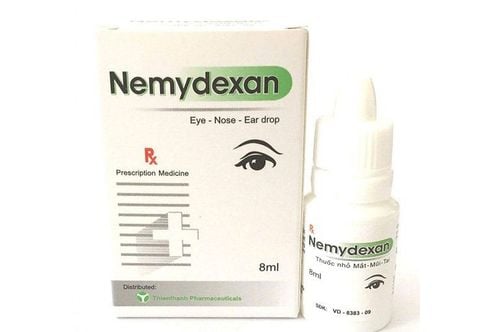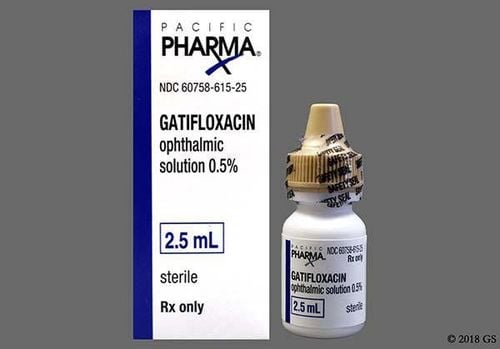This is an automatically translated article.
The article is professionally consulted by Specialist Doctor II Nguyen Thai Hung - Department of Medical Examination & Internal Medicine - Vinmec Danang International General Hospital.
Pink eye, also known as conjunctivitis, is a highly contagious disease that runs in families and communities. Therefore, the treatment of pink eye has both the purpose of improving symptoms, speeding healing, and preventing transmission to the healthy eye as well as to other people. Only when that is the case, this disease will no longer be a vicious circle, protecting healthy and beautiful eyes.
1. What is pink eye?
When the white conjunctiva in your eye is seen to turn red or pink accompanied by an itchy sensation, you may have a condition called pink eye.This is not due to an abnormality of the conjunctiva, but to an inflamed conjunctiva. The conjunctiva is a transparent membrane that covers the front of the eye and both upper and lower eyelids, which is inherently invisible. For this reason, pink eye is also known as conjunctivitis. The cause of the disease can be a bacterial or viral infection or it can also be a manifestation of an allergic reaction.
Bacterial and viral conjunctivitis are both very contagious and you can pass it on to others for up to two weeks after symptoms first appear. Meanwhile, allergic conjunctivitis is not contagious.
2. How does pink eye spread?
The infection in pink eye can be passed from person to person in the same way that infections are caused by viruses and bacteria. The incubation period, the time from infection to when symptoms actually appear, for viral or bacterial conjunctivitis is about 24 to 72 hours.If you touch something that contains a viral or bacterial pathogen that has affinity for the conjunctiva and then touches your eye, you can get pink eye. Most bacteria can survive normally on surfaces for up to eight hours, while some species can survive for up to several days. In contrast, most viruses can persist for a very long time, for a few days or even for some species for two months on a favorable surface.
Infection in pink eye can be spread to others through close contact, such as shaking hands, hugging or kissing. Coughs and sneezes can also spread through droplets. Even if one of your eyes is infected, the other will still heal but will eventually get the same infection.
Also, you have a higher risk of pink eye if you wear contact lenses. Because this is also a pathway for bacteria to live, grow and proliferate on glass surfaces as well as on the human body.

Đau mắt đỏ có khả năng lấy từ người này sang người kia thông qua việc: ôm, hôn
3. How long do you need to be isolated for pink eye?
Pink eye is an infectious disease that begins when one of the symptoms appears and persists as long as the person still has watery and pus discharge.So if your child has pink eye , it's best to keep them at home until the symptoms completely disappear, to prevent spreading it to other children of the same age. Fortunately, most cases of pink eye are mild, with symptoms usually markedly relieved within a few days.
For adults, you can still work but should be in an independent environment, limiting contact with others. At the same time, you need to take careful protection measures such as wearing goggles, covering your cough and sneezes, washing your hands thoroughly after touching your eyes... to limit the infection to people around or to members. other members of the family.
4. How to prevent pink eye?
The most effective pinkeye prevention rule is to limit possible routes of infection to someone who has it, including from your child.The most important thing is that you should not touch your eyes directly. In particular, you should have the habit of washing your hands often with antibacterial soap under running water for at least 20 seconds and following the correct procedure. The time to wash your hands is after cleaning yourself or your children, there is a risk of contact with sources of infection such as toilets, trash cans, doorknobs, furniture surfaces, using public objects. plus... Not only that, this habit needs to be practiced by all family members, including young children if they start to have a sense of cooperation.
In addition, other ways to help prevent pink eye include:
Avoid rubbing your eyes Use a personal towel. Wash towels and washcloths daily. Avoid sharing towels and utensils with others such as dishes, drinking glasses, etc. Change pillowcases often. Do not share eye cosmetics. If you get a suspected eye infection from cosmetics, discard them. Do not share eye drops with others, whether you have pink eye or not. Remove makeup, especially the eye area, before going to bed. Stop using contact lenses during red eyes. Keep contact lenses and containers clean, and clean them daily as directed by your eye doctor. Avoid exposure to smoke (tobacco), chemical fumes, and other irritants Although most cases of pink eye have a mild course that resolves on its own after a few days, because it is highly contagious in community, each person needs to know how to clean and protect their own eyes from sources of infection. When you are sick, you need to actively isolate yourself to avoid spreading the disease to others.
Specialist II Nguyen Thai Hung has 13 years of experience as an eye doctor at C Hospital Da Nang and Ngu Hanh Son General Hospital - Da Nang. Currently working as an Ophthalmologist at the Inter-specialty Clinic of Medical Examination - Internal Medicine, Vinmec International General Hospital Da Nang.
Customers can directly go to Vinmec Health System nationwide to visit or contact the hotline HERE for support.
References source: healthline.com, cdc.gov
MORE:
How is conjunctivitis transmitted? What to avoid when sick? How to care for children with pink eye Conjunctivitis eye: Causes, symptoms, treatment and prevention














